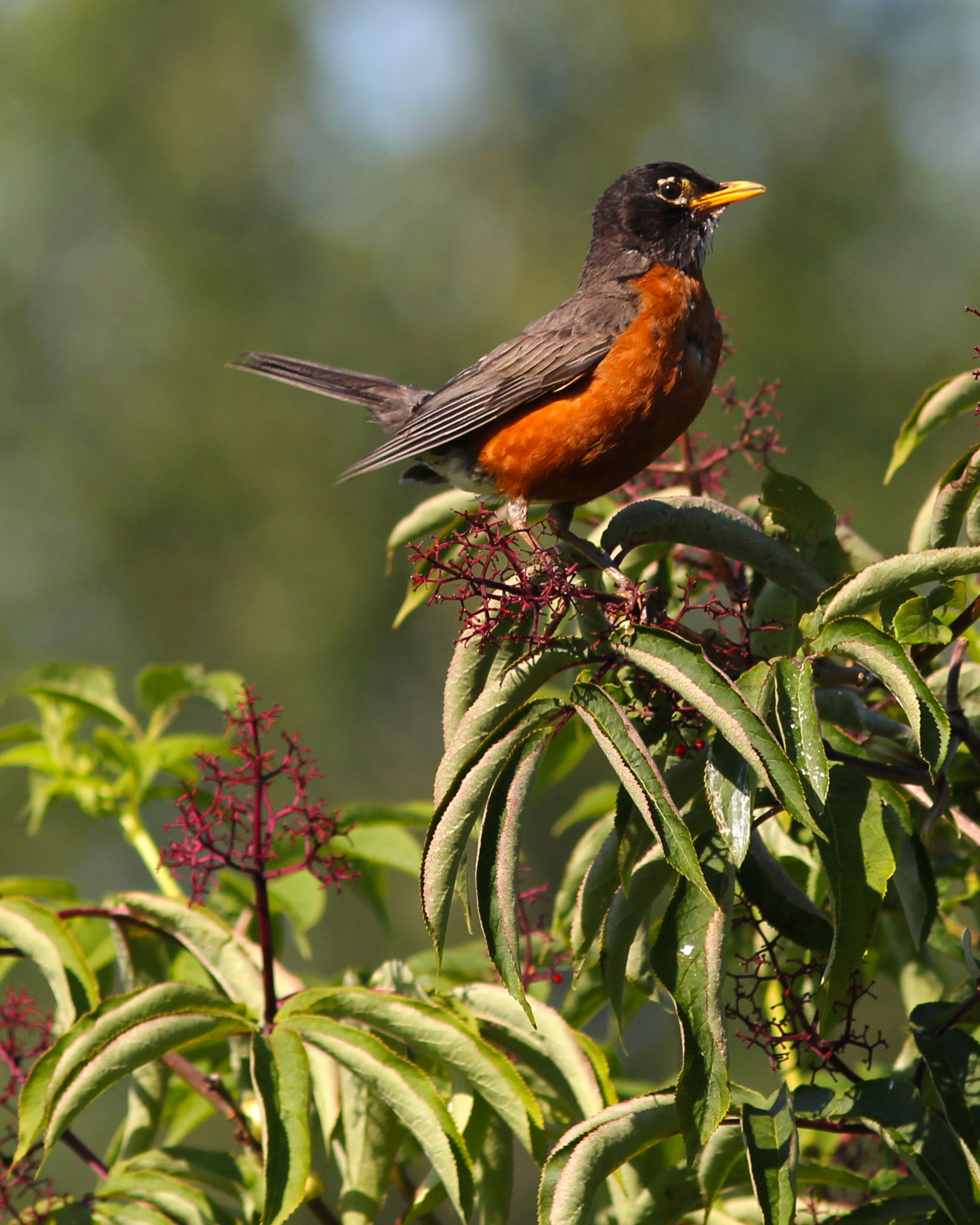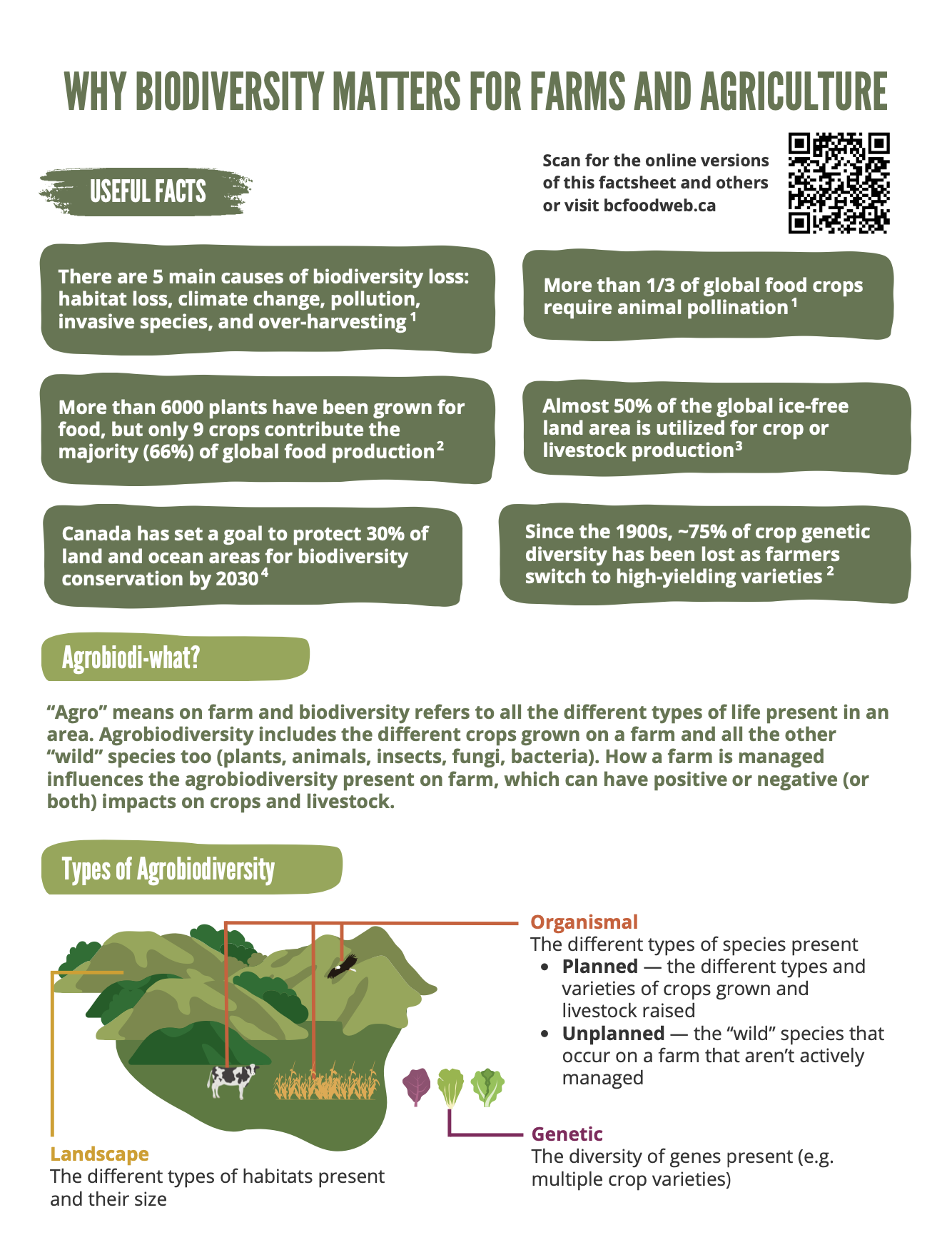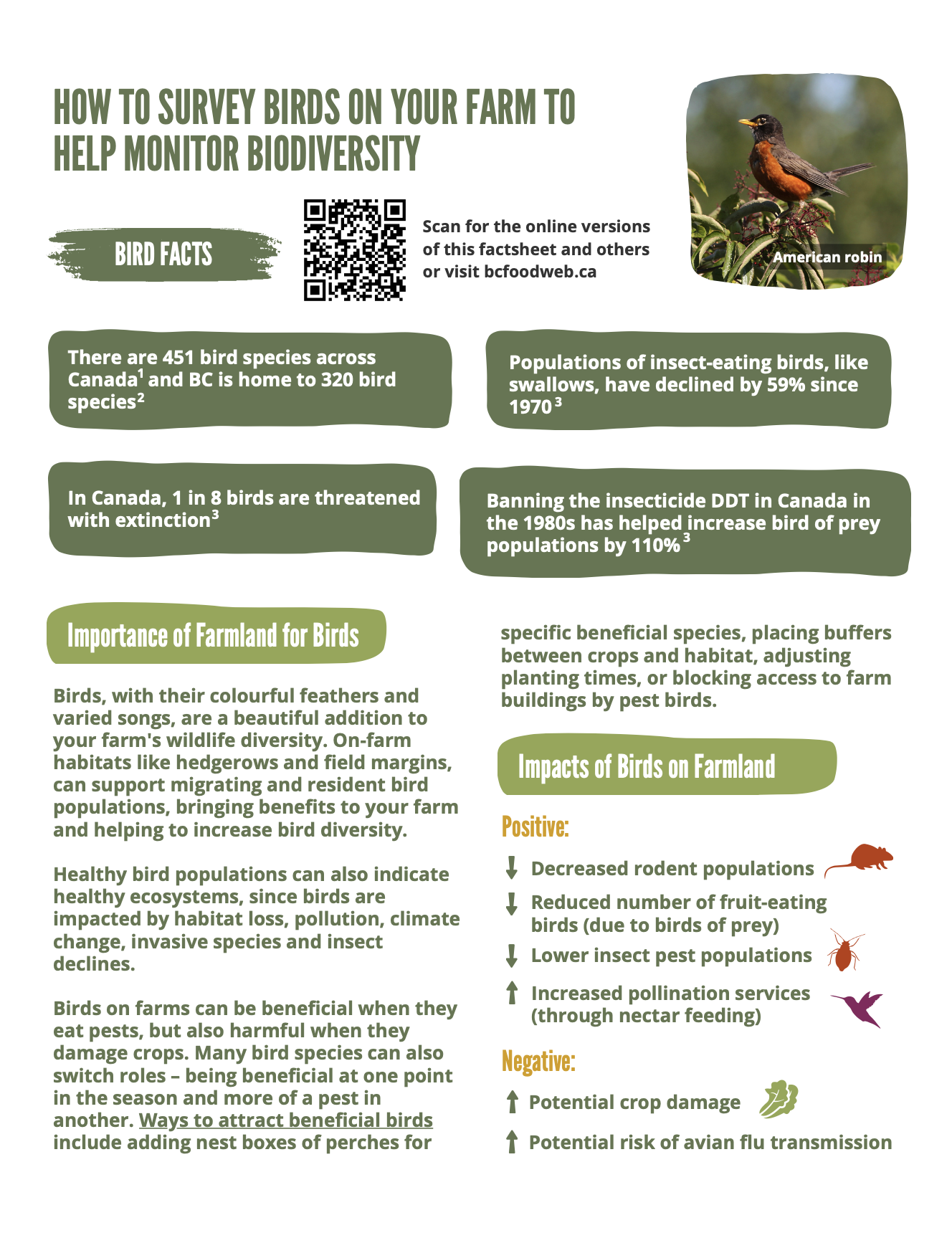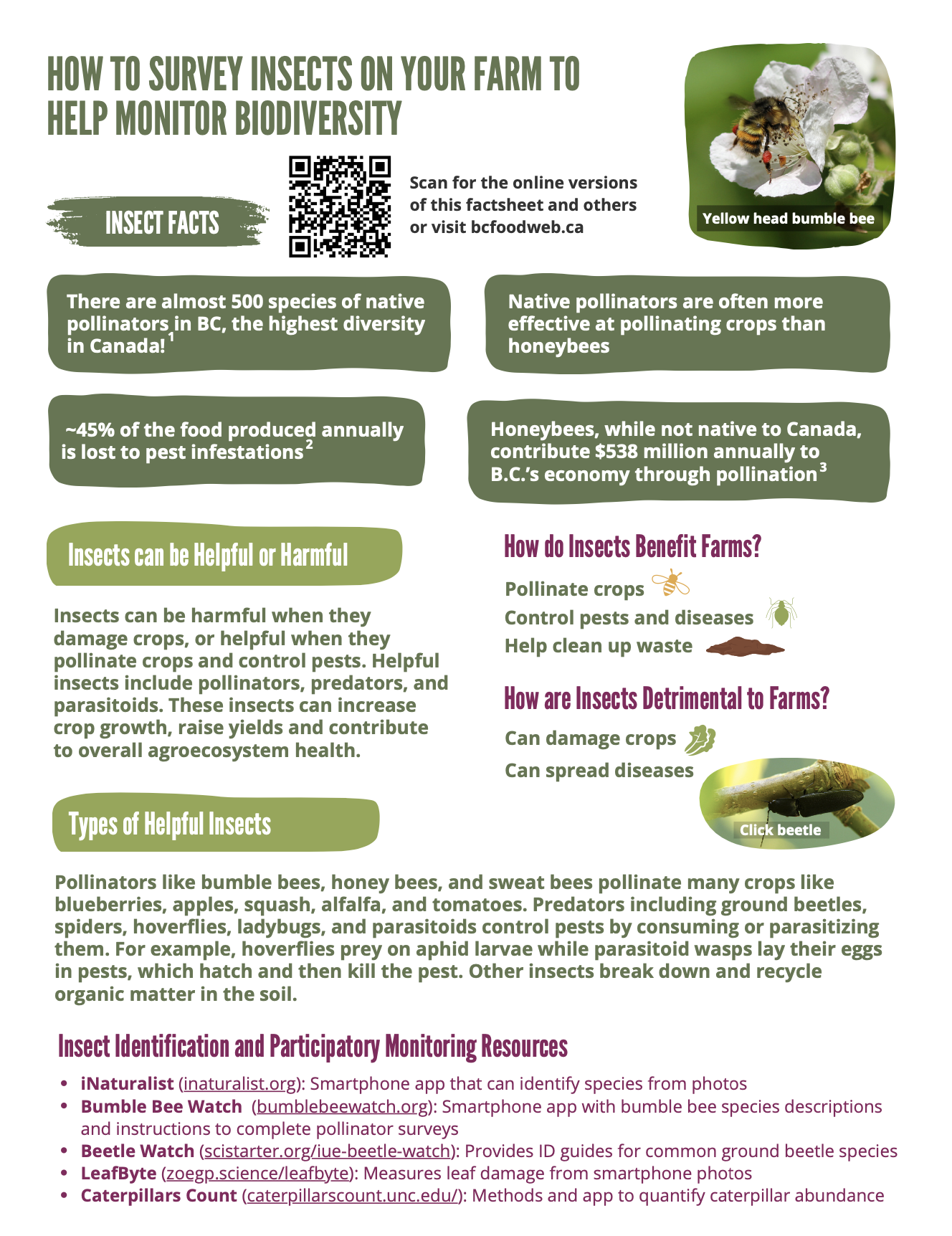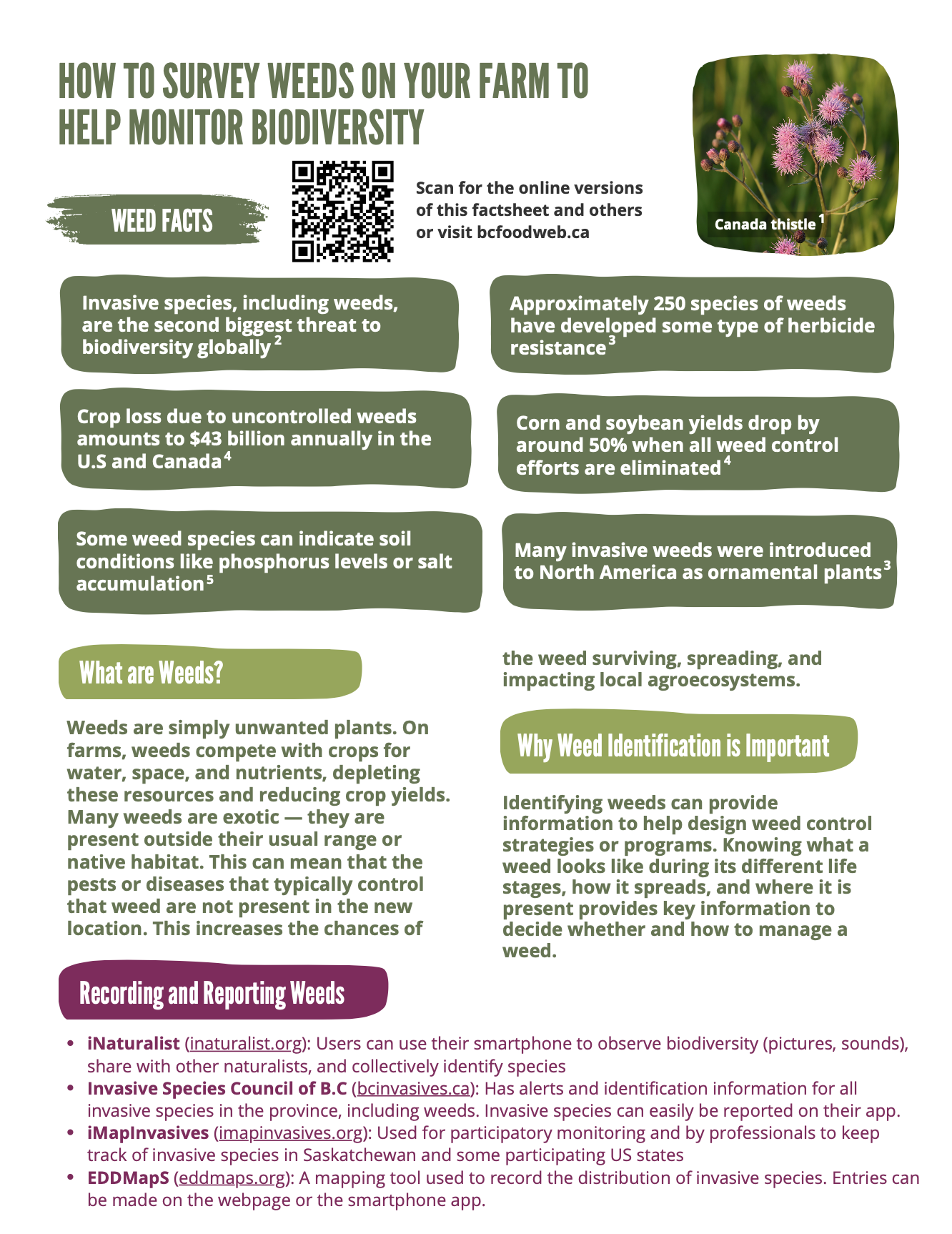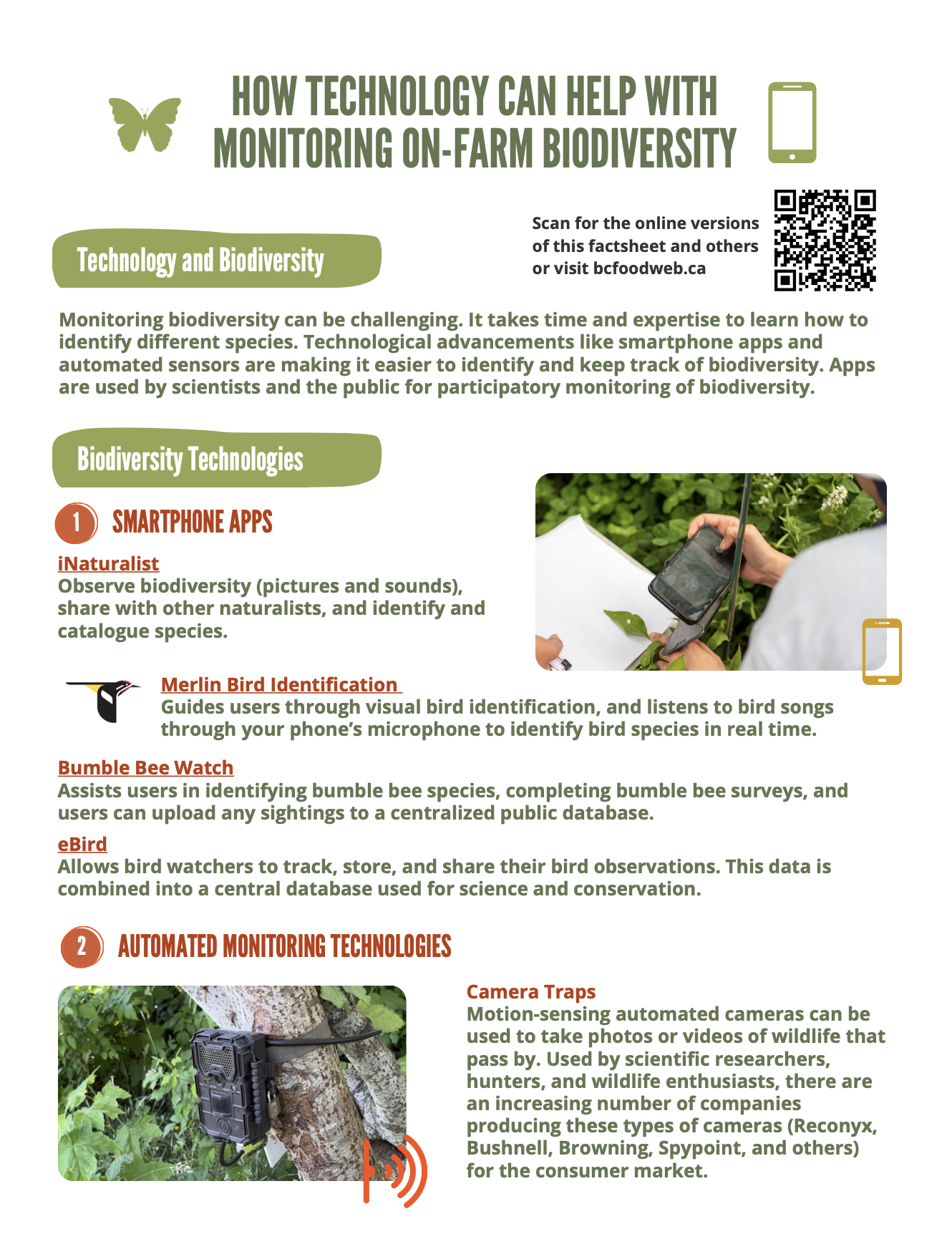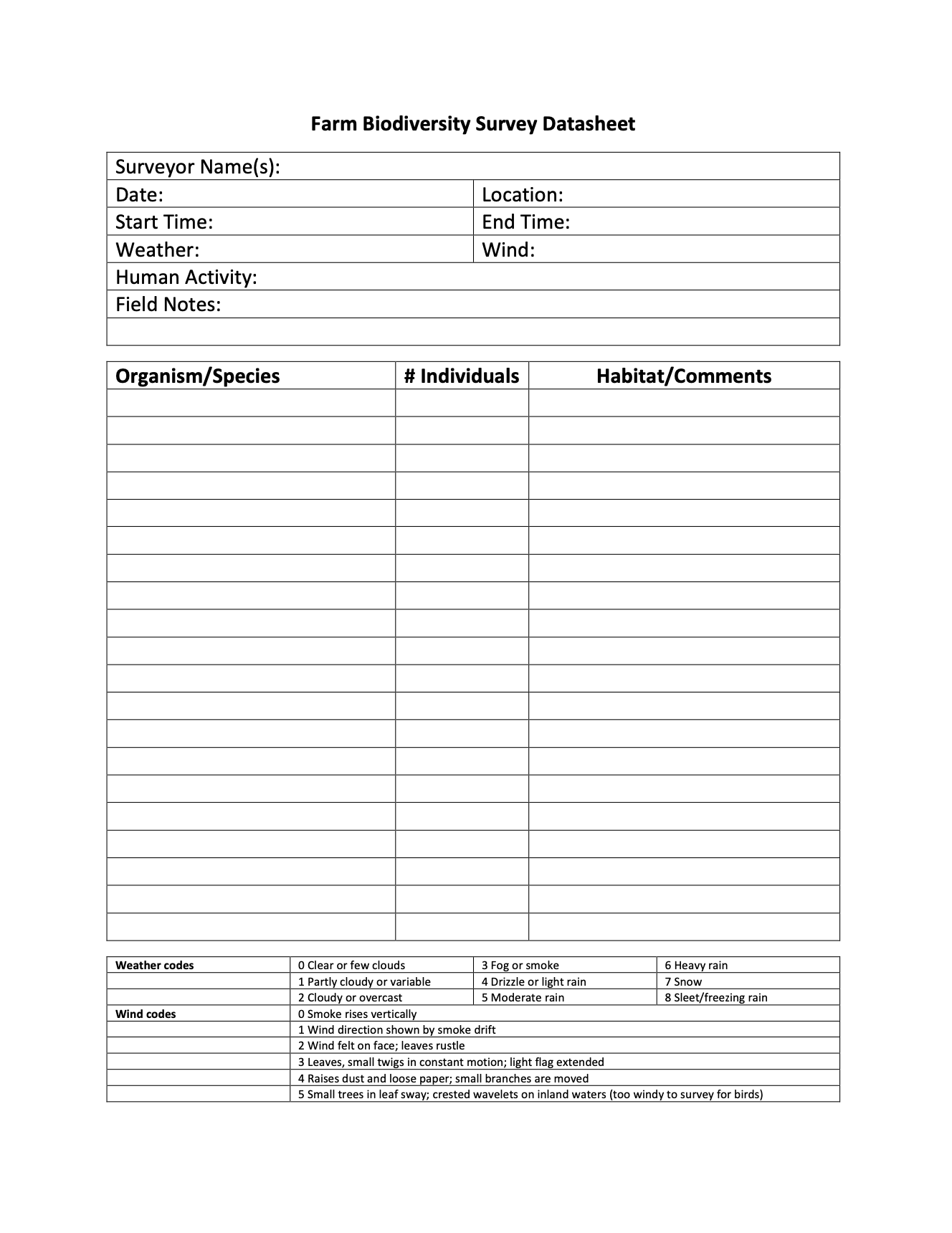Surveying On-Farm Biodiversity
Why Biodiversity Matters for Farms and Agriculture
Written and prepared by Matthew Mitchell, Hannah Wittman, Chelsea Gowton, Hafsa Ahmed, Hudson Holdcroft, and Derek Tan. Factsheets designed by the BC Food Web team.
However, monitoring biodiversity, and especially agrobiodiversity, is often challenging. Learning how to identify different species and record their presence in regular and consistent ways can take time and effort. A common question is: where to start when measuring agrobiodiversity? To help with this, the Centre for Sustainable Food Systems in collaboration with the Beaty Biodiversity Museum and BC Food Web have created a series of factsheets and videos to help farmers, producers, and interested individuals start learning how to monitor agrobiodiversity. Focusing on birds, weeds and insects, we describe the importance of each of these groups, outline simple and efficient ways to monitor these species groups, and highlight smartphone app and online resources that can help with monitoring activities. We also describe new technologies that are available or are being developed that are helping make it easier to identify and keep track of agrobiodiversity. Please check out these resources below!
How to Survey Agrobiodiversity (Factsheets)
How to Survey Agrobiodiversity (Videos)

